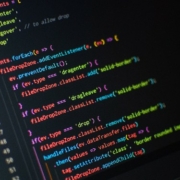This article will demonstrate the heterogeneous systems integration and building of the BI system and mainly talk about the DELTA load issues and how to overcome them. How can we compare the source table and target table when we cannot find a proper way to identify the changes in the source table using the SSIS ETL Tool?
Systems Used
- SAP S/4HANA is an Enterprise Resource Planning (ERP) software package meant to cover all day-to-day processes of an enterprise, e.g., order-to-cash, procure-to-pay, finance & controlling request-to-service, and core capabilities. SAP HANA is a column-oriented, in-memory relational database that combines OLAP and OLTP operations into a single system.
- SAP Landscape Transformation (SLT) Replication is a trigger-based data replication method in the HANA system. It is a perfect solution for replicating real-time data or schedule-based replication from SAP and non-SAP sources.
- Azure SQL Database is a fully managed platform as a service (PaaS) database engine that handles most of the management functions offered by the database, including backups, patching, upgrading, and monitoring, with minimal user involvement.
- SQL Server Integration Services (SSIS) is a platform for building enterprise-level data integration and transformation solutions. SSIS is used to integrate and establish the pipeline for ETL and solve complex business problems by copying or downloading files, loading data warehouses, cleansing, and mining data.
- Power BI is an interactive data visualization software developed by Microsoft with a primary focus on business intelligence.
Business Requirement
Let us first talk about the business requirements. We have more than 20 different Point-of-Sale (POS) data from other online retailers like Target, Walmart, Amazon, Macy’s, Kohl’s, JC Penney, etc. Apart from this, the primary business transactions will happen in SAP S/4HANA, and business users will require the BI reports for analysis purposes.


